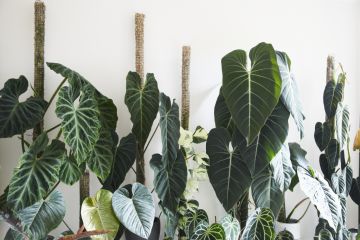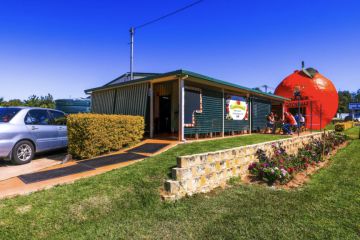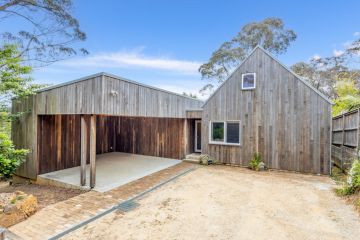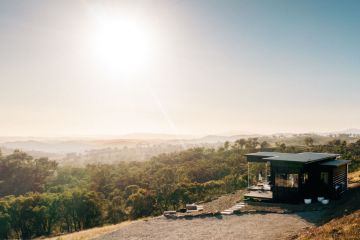A space in the sun: How to style your outdoor area for the warmer months
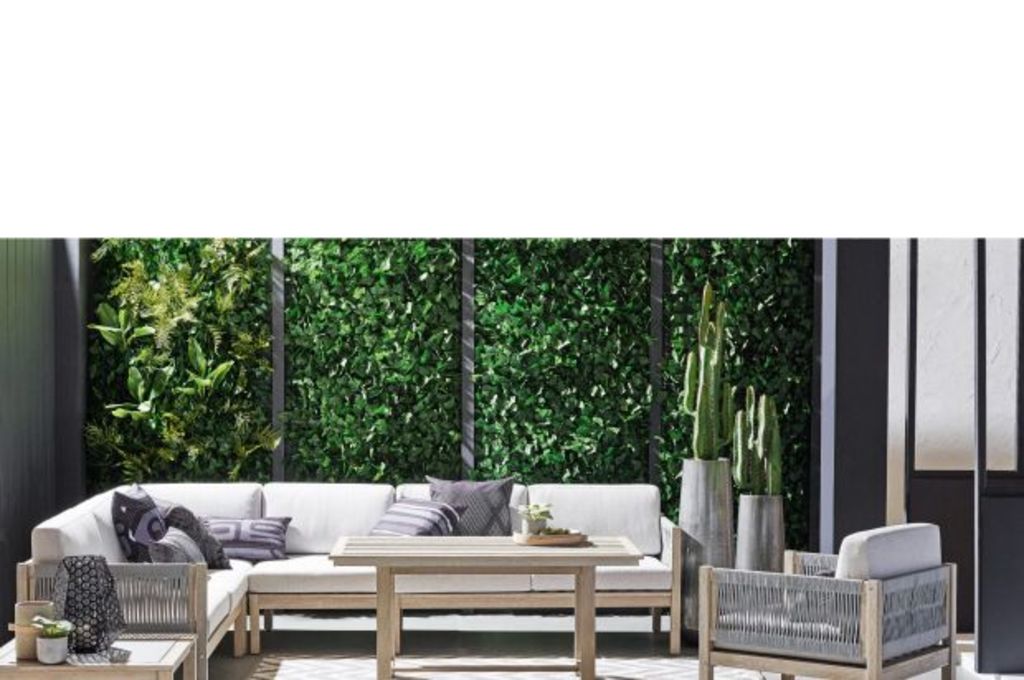
With the glory days of spring just weeks away, it’s time to start preparing for the home-entertaining season ahead.
Interconnected indoor-outdoor spaces designed for entertaining are a signature of Australian homes. Unlike most dense cities around the world where these are non-existent or merely a place to hang washing, indoor-outdoor spaces are an expected feature of all modern Australian properties, from large estates with big gardens through to small apartments.
“This is basically the brief for every single house or renovation we do,” says architect Berit Barton, studio director of Pleysier Perkins.
“I think it’s because we Australians like to basically live half outdoors, even in Victoria, where the climate is not necessarily always ideal. And, we do like to be social while having our privacy at all times. We are basically extroverted introverts.”
Barton says there are four key elements that underpin a well-designed outdoor space – flow from the inside out; vistas from as many rooms as possible; access to light and air; and the right balance between shelter and openness.
With these foundations at play, material choices and styling can enhance an outdoor area’s comfort level, appearance and sense of space.
Ian Barker, director of Ian Barker Gardens, says the overall look of an outdoor area should be dictated by the design of the main house to feel like a seamless extension of the interior.
Bluestone pavers and timber ceilings are hardworking, timeless materials that lend themselves to this technique, creating a sense that the outdoors is being drawn into the house, not vice versa.
- Related: Inside the home of artist Rachel Castle
- Related: The commission of an architect’s career
- Related: The importance of place in architecture
Choose large pavers and place furniture away from a property’s boundary to further increase this illusion, while also enabling breathing room for surrounding textured landscaped greenery.
“Less is always more. The rule of thumb is that if there is nothing you’d take out, you’re done. So, keep editing until there is nothing left to take out,” Barker says.
Those with the luxury of a bigger block are encouraged to think of their outdoor space as a series of separate but cohesive zones. For example, a garden, relaxed seating area, dining area and pool. There should be a contrast between shelter and open sky areas among the zones, with at least one area featuring a pergola or extended roof to create the feeling of an external room.
By constructing a different height for each outdoor zone, a natural distinction between spaces can be achieved without the need for screens, pebbles or box hedges, which can often appear dated.
“Adding levels and zoning may first go against the instincts, however, it can help make an outdoor space appear bigger, rather than revealing the whole extent of the property by keeping it flat and open,” Barton says.
Barker recommends starting this process by dividing up the available space and considering the order you’re most likely to transition between areas. For example, when entertaining, you might typically start at the outdoor dining table before moving to a more comfortable seating area. Each zone should appear separate but be linked via pathways for a consistent flow.
“One space should flow seamlessly to the next, with the subsequent space in view of the one before,” Barker says. “This is, however, a fine line, as you don’t want to make what’s coming up too obvious, otherwise there is no point getting up to find out what’s ahead.
“If you can see everything from the back door, people have no need to venture out.
“It’s nice not to see it all in one hit, leave something to the imagination. We encourage exploration and participation in our garden designs.”
Choosing different furniture and decor products within the same material and colour family can also create distinctions between zones while simultaneously drawing the entire area together. A simple palette of white weatherboards, Australian timbers and painted brickwork can complement all manner of styles to tie these elements together.
The classic glass-top table with mesh chairs is the quickest way to cheapen any outdoor space. Instead, give your outdoor furniture as much thought and deliberation as you would a living room lounge, taking into account its durability, practicality, attractiveness and suitability to the existing space.
Domayne general manager of furniture Amber Cooke recommends modular lounges as a key investment for regular entertainers.
“Choose from a variety of mixed materials and textures including hand-woven, weather-resistant wicker, resilient aluminium or timber and rope combinations in a variety of sizes to suit any living space, from balconies to al-fresco areas or large open spaces,” Cooke says.
Bar tables or extendable dining tables with stackable chairs are ideal for tighter spaces to provide adequate seating on a small footprint and to allow room for additional decor elements.
“Add colour and texture to your outdoor space by adding a low-maintenance outdoor rug, even layering it to add dimension. Complement your outdoor furniture by adding decorative pieces including lanterns and vases that add warmth and edge,” Cooke says.
For more relaxed areas, ottomans, bean bags and cushions combine fun with function indicative of the space’s purpose.
We recommend
We thought you might like
States
Capital Cities
Capital Cities - Rentals
Popular Areas
Allhomes
More
- © 2025, CoStar Group Inc.
